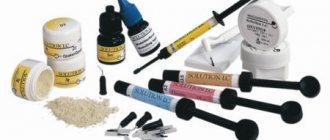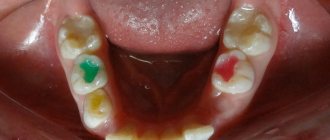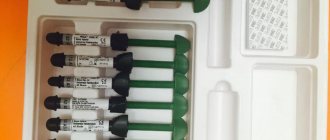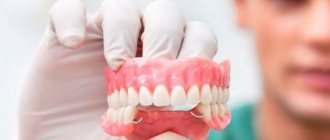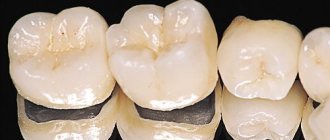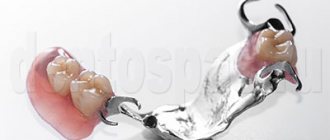Carious disease manifests itself in many cases quite unnoticed, very often having a small black dot in the tooth; when visiting the dentist, very deep caries is discovered.
Basically this confuses us and we immediately start thinking about what we should do, what material is better to use and how much it will cost us. We can answer all your questions without difficulty.
We want to tell you and offer the modern nanocomposite material Filtek. Its application is very wide, from the smallest restorations to filling large volumes of voids. In this article we will tell you about what Filtek restoration fillings are. About the areas in which they are used. We will also talk about the undoubted advantages of this light-curing material. And of course we will tell you about the different types of Filtek fillings.
general information
Filtek is a composite material widely used for dental restoration. It was developed by specialists from the famous ZM ESPE corporation at the beginning of this century.
For the first time, specialists used the latest technologies - the introduction of nanoparticles, nanoclusters and their combinations into the composition of the composite. This ensured the material long-term strength and exceptional aesthetics.
A large number of shades of the composite are presented, and this makes it possible to use it on any part of the dentition. At the moment, Filtek is firmly established in the arsenal of modern dentists.
Types of Filtek filling material:
There are three types of Filtek fillings: Filtek Z250, Filtek Supreme and Filtek Ultimate.
So, the first one: Filtek Z250 - this material has good density, which allows it to adhere well to the edges of the teeth. This material is used in the so-called layer-by-layer technique, which means the moment when the filling is built up and more than one layer is used. This material minimizes the recurrence of caries to almost zero.
Second: Filtek SupremeXT - this material is great for making veneers or inlays. This material has a large number of shades, which makes it an excellent option for the restoration of front teeth.
And finally the third type: Filtek Ultimate - this material is newer, it was developed to improve and improve the Filtek Supreme material. It's essentially the same thing, but it has an improved formula for long-lasting shine. This material is also more convenient for the dentist to use, which will make the procedure faster.
Release form and composition
The basis of the Filtek filling material is acrylic polymer resins of various types. Each type of composite has its own specific composition , depending on the purpose of application.
To impart color to a future filling, fillers are used in the form of silicon and zirconium nanoparticles, and their combinations - nanoclusters. The sizes of these particles range from 0.6 to 20 nm.
The color of the future filling depends on the filler included in the base material. More precisely, it depends on the size and quantitative ratio of nanoparticles and nanoclusters in it. The smaller their size, the denser and more matte the filling will be.
Composite mass of various compositions, placed in syringes, is included in the package of ready-made kits for work. Depending on the goals and objectives, there are several varieties.
Single Shade Set
A set of this type contains syringes with composite material in the amount of 2 pieces. The filling material has colors A2, A3, which have the classification “body” - universal.
The kit comes with instructions for use with technical specifications.
Dual Shade Kit
This kit contains a set of 4 syringes. Available shades - 2 syringes for dentin restoration - A3, A4; 2 syringes for enamel restoration – A2, A3.
Additionally, the set contains an auxiliary scale for selecting the desired color. The kit is supplied with technical instructions.
Composition and properties of glass ionomer cement for filling and indications for its use.
Let's talk here about the tactics of unfilling root canals.
At this address https://www.vash-dentist.ru/lechenie/zubyi/plombyi/idealnyiy-variant-spektrum.html we offer a detailed description of the Spectrum filling.
Professional set
The professional set contains 12 working shades of the material:
- A2, A3, B3 – for restoration of dentin zones;
- A1, A2, A3, W – for work on the enamel layer;
- B2, A2, A3, A3.5 – universal “body” shades;
- AT is a shade with a transparent effect.
As in the previous case, the kit contains an auxiliary color selection scale and instructions for use.
In addition to specially selected kits, separate syringes filled with composites of certain compositions are produced. The most common ones are Filtek Z250 and nanohybrid Z550.
Filtek Z250
Available in separate 4 g syringes. It is a microhybrid material and contains an increased amount of nanoparticles. It has particularly high strength and adheres well to the walls of the tooth.
The range of applications is very wide:
- filling all types of cavities on the front and side teeth;
- performing veneers;
- splinting.
The color range of this type of composite includes 15 shades, which ensures its use in the restoration of any area of the dentition.
A filling made from Z 250 completely eliminates the possibility of recurrent caries.
Nanohybrid Z550
This series of composites is a modification of the Z250 series. It consists of nanoparticles and nanoclusters. Also available in syringes of 4 g.
Presented in 12 types of shades, each of them is radiopaque and fluorescent.
It is mainly used for reconstruction of the frontal and lateral parts of dental groups. It is simple and convenient to use; it does not stick to tools or gloves.
Allows you to perform any tooth modeling and subsequently retains the completed shape well.
filtek bulk fill fluid composite material
The Dental-Shop company presents the innovative Filtek bulk fill 4862 dental fluid material, 2 syringes of 2 grams each
DESCRIPTION:
FILTEK BULK FILL (2 pcs, 2 g, 20 nozzles) Liquid-flowing composite material Filtek™ Bulk Fill BulkFill.
3M ESPE Filtek Bulk Fill flowable restorative material is a flowable, light-curing, low-viscosity radiopaque composite.
This low internal stress, flowable material is translucent and can be cured to a depth of 4mm.
Filtek Bulk Fill flowable material contains bis-GMA, UDMA, bis-EMA(6) and Procrylat composites. The filler used is a combination of ytterbium trifluoride with particles ranging in size from 0.1 to 5.0 microns and a zirconium-silicon mixture with particle sizes ranging from 0.01 to 3.5 nm. The proportion of inorganic filler is about 64.5% by weight (42.5% by volume).
INDICATIONS
- Base for direct restorations of classes 1 and 2
- Spacer for materials for direct restorations
- Pit and fissure sealant
- Restoration of minimally invasive prepared cavities (including small restorations in areas of occlusion that are not under load)
- Restoration of defects of classes III and V
- Blocking undercuts
- Elimination of minor enamel defects
- Minor defects in esthetic indirect restorations
- Repairing composite and acrylic temporary materials
- To restore the destroyed part of the tooth and when forming a coronal stump in cases where at least half of the coronal part of the tooth is preserved as a support
Advantages:
- Quick and convenient restoration of dentin in one portion up to 4 mm without layer-by-layer application for the lateral group of teeth
- Easy material adaptation due to controlled fluidity
- Radiopacity
- 4 available shades (A1, A2, A3, U-universal)
- High wear resistance and strength in the class of fluid materials applied in large portions
- Does not drain with restorations on the upper jaw
Equipment:
- Filtek Bulk FillPosterior - material for restoration of lateral teeth, 2 syringes of 2 grams each
Manufacturer: 3M ESPE
INSTRUCTIONS FOR USE Preparation
Cleaning. To remove plaque, teeth must be cleaned with a water-pumice suspension. Choice of shade. Before isolating a tooth, select the shade(s) of Filtek Bulk Fill flowable restorative material using the standard VITAPAN classic shade chart. When using sealants or core restoration materials, it may be preferable to use contrasting shades to differentiate the materials. Note: Because Filtek Bulk Fill is a translucent material, the area of restoration, the color of the underlying tooth or adjacent areas of the restoration may affect the final appearance of the base/liner. Insulation. The preferred method of isolation is a rubber dam. However, you can also use cotton swabs in conjunction with a saliva ejector. Directions 1. Interdental matrix. Proper use of the interdental matrix is necessary to ensure proper sealing of the tooth contact area. To achieve a tight fit of the gums and establish the desired distance between the teeth, taking into account the thickness of the dental matrix, wedges should be used. It is preferable to use a pre-modeled sectional matrix. However, if necessary, an ultra-soft ring matrix can also be used. The matrix must be ground to form a proper proximal contour because the flowable Filtek Bulk Fill will not hold it in place during placement.
2. Pulp protection. If pulp exposure has occurred or the situation requires direct pulp capping, apply a small amount of calcium hydroxide to the exposed area, followed by 3M ESPE Vitrebond or Vitrebond Plus light-curing glass ionomer material. Vitrebond or Vitrebond Plus liner/backing material can also be used to cover deep cavity excavation areas.
3. Adhesive system. To embed Filtek Bulk Fill into the tooth structure, it is recommended to use the 3M ESPE adhesive system. For complete product information and associated safety precautions, please refer to the adhesive system instructions for use.
4. Application. 4.1. Application using a syringe. Filtek Bulk Fill can be applied using a dispenser tip. 4.1.1. Staff and patients are advised to wear safety glasses when using the handpiece. 4.1.2. Tip preparation. Remove the cap and set aside. Gently bend the tip directly onto the syringe. Without pointing the syringe toward personnel or the patient, dispense a small amount of flowable Filtek Bulk Fill to ensure patency of the system. 4.1.3. If there is an obstruction, remove the tip and squeeze a small amount of Filtek Bulk Fill directly from the syringe. If there is a visible blockage in the syringe opening, it must be removed. Reinstall the dispensing tip and try dispensing material again. Filtek Bulk Fill, a fluid-flowing restorative material, can be squeezed onto a mixing plate and applied using a suitable tool.
4.2. Single use capsule. Insert the capsule into the 3M ESPE Restorative Dispenser. Follow separate dispenser instructions and associated safety precautions.
5. Application. 5.1. Avoid direct exposure to intense light on the work area. Exposing the paste to intense sunlight may cause premature polymerization.
5.2. Distribution of flowable material Filtek Bulk Fill. Start at the deepest section of the preparation: keep the tip close to the surface. After dispensing material, slowly lift the tip above the material being dispensed to minimize air entrapment. Do not allow the tip to become immersed in the material. To treat proximal areas, press the tip against the matrix to force material into the proximal contour. 5.2.1. Use as a lining/base. For universal or composite material for posterior teeth, at least a 2-mm layer of the cavitary interface must be left. Thanks to the bite layer, strength, wear resistance, as well as aesthetic qualities necessary for the restoration of lateral teeth are achieved. 5.2.2. Restoration of the tooth stump. Inject the material into the undercut area, around pins, crowns, and then inject the drug. 5.2.3. Application of sealant. Apply the material to the surface to be prepared.
5.3. Carry out light curing as described in section 6.
6. Polymerization. The polymerization of this product is provided under the influence of light from a halogen or LED lamp with a minimum intensity of 550 mW/cm2 in the range of 400–500 nm. Cure each layer of material by illuminating its entire surface with high intensity light from a source such as the 3M ESPE Light Curer. During polymerization, keep the light guide as close to the material to be polymerized as possible. df
7. Completion of restoration. 7.1. Use as a lining/base. Apply a composite restorative material, such as Filtek Ultimate Universal, directly onto the cured flowable Filtek Bulk Fill. Follow manufacturer's instructions regarding setting, curing, grinding, occlusal check, polishing.
7.2. Sealing of pits and fissures. Carefully remove the inhibited layer remaining after light polymerization using pumice or polishing paste.
7.3. Stump extension. 7.3.1. Bulk Fill restorative material is compatible with traditional impression materials when removing the inhibitory layer. 7.3.2. Bulk Fill restorative material should be moistened with saliva or lubricant to prevent chemical cure. 7.3.3. Traditionally used temporary cement does not adhere to Bulk Fill material.
7.4. Final processing for direct restoration. 7.4.1. Polish the surfaces of the filling with diamond or carbide finishes, burs or stones. 7.4.2. Check occlusion with articulation paper. Check the center and side contacts while driving. Carefully adjust the occlusion, removing excess material with a fine-grit diamond bur or stone.
Advantages
The filling composite of the Filtek line is one of the latest generation materials. It is logical that it has a number of advantages over previous options:
- shrinkage after polymerization and exposure to light is minimized;
- high strength;
- duration of use as a filling;
- good fit into the required cavity;
- high polishing effect;
- long-lasting shine;
- the ability to create the desired color effect.
All these qualities have made this material indispensable in the work of modern dentists.
What is a cement filling on a tooth and expert reviews about the material.
In this article, read about the indications for dental retreatment.
Follow the link https://www.vash-dentist.ru/lechenie/zubyi/kofferdam-v-stomatologii.html to learn more about the rules for applying a rubber dam in dentistry.
Preparatory activities
Working with the proposed composites requires certain preparatory work.
The first step is standard brushing of teeth using normal hygiene products. Then the dentist performs a complete sanitation of the oral cavity. It includes treatment, inflammation removal and professional cleaning.
The final stage of preparation is the correct selection of the shade of the proposed filling. It is executed in the following order:
- Dividing the tooth into segments. The body of the tooth has some heterogeneity in color tone in different areas.
To reconstruct it correctly, the entire area is divided into 3 segments. Each of them is filled with a composite that matches the color for the given area.The area near the neck of the tooth is restored with yellow material. For the middle, composites of gray, yellow or brown color are used. The upper (incisal) border is made in grayish or blue shades.
- Selection of shade. The color and its saturation of each of these areas is checked using an auxiliary color scale, corresponding to that part of it that is identical to the thickness and color of the desired area of the tooth.
- Checking the correct selection. To control the correct choice of shade, the composite is applied to the desired location.
After its polymerization, a visual assessment is made using different types of light. If necessary, adjustments are made until the desired effect is achieved. - Isolation and protection of the treated area from other teeth is carried out using a latex napkin (rubber dam). If it is not available, then the use of cotton swabs or a saliva ejector is used.
This concludes the preparatory work before the restoration of damaged surfaces begins. It must go through the full cycle, regardless of which method of tooth reconstruction is chosen.
Filtek supreme - filtek supreme - filtek ultimate nanocomposite 3M (USA)
Filtek Ultimate Filtek Ultimatum - set
RUB 32,591
Filtek Ultimate syringe 4 g Filtek Ultimate
RUB 3,280
filtek supreme / nanocomposite 3M (USA)
- The universal restoration material Filtek Supreme is a photopolymerizable restoration composite developed for the restoration of anterior and posterior groups of teeth.
- All shades, except for the incisal edge shades, are radiopaque.
- The fillers used for radiopaque shades are a combination of aggregated zirconium-silicon clusters with an average particle size per cluster of 0.6 to 1.4 microns and a primary particle size of 5-20 nm, as well as non-agglomerated/non-aggregated silicon filler with a particle size of 20 nm.
- The shades of the incisal edge are not radiopaque.
- The filler for non-radiopaque shades is a combination of aggregated silica cluster filler with an average cluster particle size of 0.6 to 1.4 microns and a primary particle size of 75 nm, and a non-agglomerated/non-aggregated silica filler with a particle size of 75 nm. Inorganic filler content is approximately 72.5% by weight (57.7% by volume) for clear shades and 78.5% by weight (59.5% by volume) for all other shades. Filtek Supreme universal material contains bis-GMA, UDMA, TEGDMA and bis-EMA resins. To ensure permanent adhesion of restorations to the tooth structure, dental adhesive produced by 3M ESPE is used.
- Filtek Supreme is available in a wide range of dentin, tooth body, enamel and transparent shades. The material is available in traditional syringes and single-dose capsules.
Basic shades (universal)
Transparent shades
| Dentin shades filtek supreme (most opaque)
Enamel shades
|
Filtek™ Supreme XT flowable restorative material offers the dentist a number of new advantages
:
- Easy to use: this composite has the property of controlled fluidity, that is, its viscosity decreases under pressure, and it easily penetrates into hard-to-reach cavities, but when the pressure is removed, it perfectly retains its shape until photopolymerization https://o....-cs6.html
- Excellent aesthetic properties: polishability and gloss retention comparable to the universal Filtek™ Supreme XT and meeting high patient requirements
- Best wear resistance among flowable composites
- 12 shades matching the Body shades of Filtek™ Supreme XT Universal Composite.
- Additional opaque shade OA3 allows it to be used as a Masking Agent
- Improved radiopacity thanks to zirconium nanoparticles. Filtek™ Supreme XT flowable nanocomposite has the highest fullness in its class of composite materials
Filtek™ Supreme XT flowable restorative material is recommended
for use
in the following cases
:
- Class I, III and V restorations
- Minimally invasive cavity preparation (including pits and fissures)
- Spacer for direct restorations
- Correction of minor aesthetic defects in indirect restorations
- Sealing pits and fissures
- Undercut zones
- Repair of temporary organic matrix and acrylic materials
| Class V restoration using flowable Filtek™ Supreme XT (A3, 5) as the base material and universal composite Filtek™ Supreme XT (A3E) for maximum aesthetics. Doctor Lomakova M. V. |
Excellent aesthetic result that is easy to achieve
Easy to match shades Filtek™ Supreme XT shades are highly vibrant and have a wide “dynamic spectrum” (greater differentiation between shades). The shades of the material closely match the Vita® scale, and the chameleon effect inherent in Filtek™ Supreme XT makes working with it as comfortable as possible.
The use of the universal restoration material Filtek™ Supreme XT allows you to achieve excellent results both with single-layer restorations and with restorations in several shades. 4 opaques and 35 different shades make the restoration almost “invisible”.
The universal restorative material Filtek™ Supreme XT can be used in any clinical case. For simple and quick color selection, a round selector scale is provided. All you need to do is determine the shade of the tooth using the classic Vita® scale; the selector will offer options for single-layer, double-layer or multi-layer restoration.
But do not forget that this tool is a recommendation, and the final result will largely depend on the thickness of the layers, the structure of the tooth around the restoration and adjacent teeth.
| Restoration of the aesthetic defect of teeth 4.1 and 3.1 using single-layer (A3B) and multi-layer (A3, 5B, A2B, A2E) techniques. Doctor Lomakova M. V. |
Excellent gloss durability
Microphilic materials are characterized by gloss stability, but over time, universal composites lose much of their original shine. Filtek™ Supreme XT nanoclusters are easily agglomerated, so that they can “give off” individual components during wear. With this technology, the loss of nano-sized particles will be almost unnoticeable. When working with a hybrid material, the loss of micron-sized particles leads to deterioration in surface quality.
Impeccable strength
- Filtek™ Supreme XT is indicated for all classes of direct restorations due to its high strength properties. This is where Filtek™ Supreme XT works more as a hybrid material.
- Thanks to its high particle loading and improved organic matrix, strength properties such as compressive strength, bending strength, diametric strength and chip resistance are comparable to the best products on the market.
- What does this mean for clinical practice?
- This means that Filtek™ Supreme XT is a truly versatile composite with the esthetics required for anterior restorations and the strength required for posterior restorations. Filtek™ Supreme XT has demonstrated effectiveness in a variety of clinical situations, including large defects in the posterior teeth.
| Restoration of a class II cavity using Filtek™ Supreme XT shade B2B. Dr. P.Lambreht Belgium. |
Universal restoration material Filtek™ Supreme XT
- A combination of natural beauty and impeccable strength
- 3M ESPE introduces Filtek™ Supreme XT, a universal restorative material that combines the excellent physical and handling properties of a true nanocomposite with a convenient shade scale to achieve optimal aesthetic results in single- and multi-shade restorations.
- It was possible to obtain an optimal shade scale through an in-depth analysis of the interaction of three color parameters - optical density, hue and color intensity and their influence on the visual perception of the aesthetics of a composite restoration. The result is more natural and less noticeable restorations.
- In addition to its unique properties, Filtek™ Supreme XT inherits all the best characteristics of its predecessor 3M™ ESPE,™ universal composite materials such as strength, wear resistance, and excellent polishability.
Main advantages
- Convenient color scale. Allows you to achieve beautiful aesthetic results using one, two or several shades 4 opaques, 35 shades
- Colorless transparent shade adds depth to light shades in multi-layer restorations
- Chameleon effect: shades are easy to combine and smoothly transition into one another
- “Getting into the color” of a tooth is not difficult
- Developed using unique 3M ESPE nanotechnology, which combines the shine stability of microfils with the strength of microhybrid materials
- Possibility of use on both the frontal and chewing teeth, which is confirmed by four years of clinical practice
- Excellent handling properties. Ease of creating the desired shape
- The material holds its shape until polymerization, does not stretch or stick to tools
- Can be used in sandwich applications or in combination with Filtek™ Supreme XT flowable composite material
Filtek Ultimate Filtek Ultimatum - set => buy
Restoration methods
After all the preparatory work has been completed, a method for restoring lost teeth or dental surfaces is selected. Two main methods are used .
Direct recovery
In this case, restoration is carried out in the following order:
- The required cavity is processed.
- A pad with medicine is placed inside (if necessary).
- A matrix is inserted to ensure interaction between adjacent teeth.
- Dentin and enamel are etched.
- The adhesive is applied and time is given for its polymerization.
- The required amount of composite is placed in a block protected from light. The syringe with the remaining material should be immediately closed with a cap.
- The composite is applied in layers similar to tiles into the finished hole.
- Each layer should be illuminated in turn with a lamp containing halogen or LEDs.
- The filling is given the required contours using burs and finishers.
- It is necessary to ensure contact between the teeth - the filling is adjusted if it is insufficient. In this case, articulating paper is used.
- Final grinding and polishing of the restored area is carried out.
Indirect technique
Obviously, this method is much more labor-intensive. But in some cases there is no choice, and restoration of a lost tooth is only possible using the indirect restoration method.
This method includes the preparatory stage described above and the following operations:
- The doctor selects the type of structure and performs a complete treatment of the tooth.
- An impression is taken from the processed unit.
- In the laboratory, plaster models are made from a cast.
- The finished model is covered with a separating layer.
- The composite is applied to the tooth in layers, each layer is processed with a special light lamp.
- Formation of the desired contours and polymerization.
- The structure is adjusted, finished and polished, followed by testing on a tooth model.
- The doctor checks the stability of the structure in the treated cavity. If defects are found, they are eliminated at the place of manufacture.
- A rough texture is created on the internal surfaces.
- The prosthesis is treated with a soap solution by placing it in a bath with ultrasound. After this, it is thoroughly washed with water and dried.
- The finished product is fixed in the desired place with special cement.
Indirect restoration technique
Stages of indirect dental restoration:
- selection of shade using the method described above;
- tooth processing for the selected type of structure;
- taking an impression and sending it to the laboratory;
- production of plaster models;
- preparing a model of the processed tooth, a layer of separator is applied to it so that at the end the finished structure can be removed;
- layer-by-layer application of the composite to the tooth, formation of its anatomy, contact points and polymerization (the technique is the same as for direct restoration);
- polishing the structure and testing it on a model;
- in the clinic, the doctor checks the prosthesis in the patient’s oral cavity and, if everything is satisfactory, then fixes it; in case of defects in color, shape and size, the structure is returned to the laboratory for correction;
- creating roughness on the inner surface of the product;
- cleaning the prosthesis using a soap solution in ultrasound;
- then it is washed under running water and dried;
- Finally, the restoration is fixed with composite cement.
Recommendations and warnings
Working with Filtek composite paste requires compliance with certain precautions.
Acrylic resins (especially uncured ones) included in its composition can cause an allergic reaction if it comes into contact with the skin or mucous membranes.
There are rules that, if followed, will help avoid unpleasant moments:
- When working with composites, it is necessary to use non-contact techniques and protective gloves.
- If contact of the material with the skin does occur, the area should be thoroughly washed with running water and soap.
- If the composite gets on gloves, they should be thrown away and your hands should be sanitized. For further work, use a new set of gloves.
- Syringes should be stored in tightly closed boxes, away from light (to preserve the properties of the material). Syringes are stored at room temperature.
- Contact time with the material should be reduced to a minimum.
Caution when using the Filtek composite should be exercised not only by staff, but also by patients.
You need to make sure in advance that you are not allergic to this material, and if you have one, notify your doctor.
What are Filtek fillings?
Filtek fillings are the word quality in the highest form of restoration materials from the American manufacturer - 3M ESPE. Similar nanocomposite materials for filling are used all over the world. With their use, it is possible to restore dental aesthetics, excellent anatomical shape and chewing function.
In what areas are Filtek materials used?
Filtek material is a nanocomposite material, its use is very extensive. Unlike many other materials, Filtek is used not only in the restoration of chewing teeth, but also in cases where it is necessary to restore the aesthetics of the front teeth. This material is universal!
Let's now list the undoubted advantages of this material!
Price
The cost of both sets and individual Filtek syringes varies quite widely. It depends on the configuration of the kits and the type of composite.
The average price level in Moscow looks like this:
- Set of maximum content – 22,000-29,000 rubles.
- Sets Single Shade and Dual Shade – 10,000-15,000 rubles.
- Syringes – from 2300 rub. (depending on the type).
More accurate information can be found on the seller’s website and by calling reference numbers.
From the video, learn about the new filling material Filtek Bulk Fill Posterior.
Equipment:
Single shade introductory set , 2 syringes of Body shade: A2 and A3 (4 g each), technical guide
Introductory set Dual Shade 4 syringes (4 g each), Dentin shades A3 and A4 and Enamel shades A2, A3 (1 syringe each), 1 Selector scale, technical guide.
Professional set Filtek Ultimate 12 syringes (4g each), Dentin shades A2, A3, B3, Body shades: A2, A3, A3.5, B2, Enamel shades A1, A2, A3, W and Transparent shades: AT, 1 Scale- selector; technical guide
Individual syringes of Filtek Ultimate material: A1D, A3D, A4D, B3D, C4D, WD, A1B, A2B, A3B, A3.5B, A4B, A6B, B1B, B2B, B3B, B5B, C1B, C2B, C3B, D2B, D3B, WB, XWB, A1E, A2E, A3E, B1E, B2E, D2E, WE, XWE, CT, BT, GT, AT.
Reviews
Filtek brand filling materials are used in almost every clinic. The vast majority note the complete compliance of expectations with the results obtained.
We invite readers who have experience in restoring teeth using this material to share their opinions about it in the comments to this article.
If you find an error, please select a piece of text and press Ctrl+Enter.
Tags treatment filling material Filtek fillings
Did you like the article? stay tuned
Previous article
Provocateurs of alveolar bleeding and ways to combat complications
Next article
Review of traditional and innovative gingivotomy method

